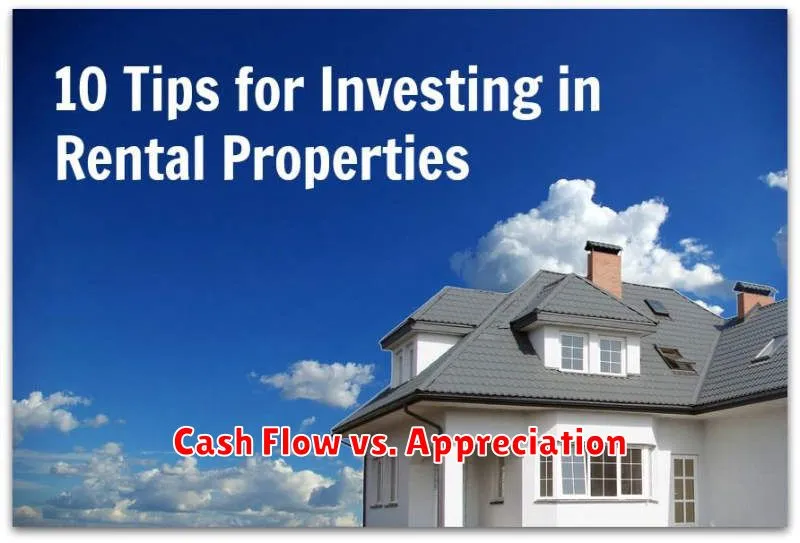Evaluating property investment opportunities requires a diligent and analytical approach to maximize returns and minimize risks. Whether you are a seasoned investor or just beginning to explore the real estate market, understanding how to assess property investment potential is crucial. This article will guide you through the key factors to consider when evaluating investment properties, providing a comprehensive framework for making informed decisions and building a successful property portfolio. Learn how to analyze property values, assess rental income potential, and calculate return on investment (ROI) to identify lucrative real estate investments.
From analyzing market trends and conducting property due diligence to understanding financing options and calculating investment returns, this guide will equip you with the necessary knowledge and tools to confidently navigate the complex world of property investment. We will explore various investment strategies, including buy-and-hold, flipping properties, and rental property management, allowing you to choose the approach that best aligns with your financial goals and risk tolerance. Discover how to identify promising investment opportunities, avoid common pitfalls, and make sound real estate investment decisions that can contribute to long-term financial success.
Difference Between Investment and Personal Property
Investment property refers to assets purchased with the primary intention of generating income or appreciating in value. This can include rental properties, stocks, bonds, mutual funds, and other financial instruments. The focus is on financial gain, either through rental income, dividends, interest, or capital appreciation. Investment properties are often managed with a specific investment strategy in mind, aiming to maximize returns and minimize risk.
Personal property, conversely, encompasses items owned for personal use and enjoyment. These are possessions utilized in daily life and are not typically intended for generating profit. Examples include furniture, clothing, vehicles, electronics, and jewelry. While some personal property items may appreciate in value over time (such as classic cars or antiques), this is generally not the primary reason for their ownership.
The key distinction lies in the intended purpose of the asset. Investment property is acquired for financial gain, while personal property is acquired for personal use. This difference impacts how these assets are treated for tax and legal purposes. For instance, depreciation can be claimed on investment properties, but not typically on personal property (with certain exceptions). Understanding this fundamental difference is crucial for effective financial planning and management.
Key Metrics for Evaluating Real Estate Investments
Real estate investing requires careful analysis to determine profitability. Net Operating Income (NOI) is a crucial metric, calculated by subtracting operating expenses from revenue. It reflects the property’s income generation potential before considering financing costs. Capitalization Rate (Cap Rate), calculated by dividing NOI by the property’s value, helps investors compare the potential return of different properties. A higher cap rate generally indicates a higher potential return, but also potentially higher risk. Cash flow represents the net cash generated by the property after all expenses, including debt service, are paid. Positive cash flow signifies the property’s ability to cover its costs and generate profit.
Another important metric is the internal rate of return (IRR). This metric calculates the total percentage return over the lifespan of the investment, taking into account the time value of money. It helps determine the overall profitability of a project and allows for comparison with other investment opportunities. Return on investment (ROI) measures the profit or loss on an investment relative to its cost. It’s a simple yet effective metric for assessing the efficiency of an investment. Lastly, the gross rent multiplier (GRM), calculated by dividing the property’s price by its annual gross rental income, provides a quick estimate of value, particularly useful for comparing similar rental properties.
Investors should also consider qualitative factors alongside these metrics. Location plays a vital role in determining property value and potential appreciation. Market conditions, including supply and demand dynamics, affect property values and rental rates. The property’s condition and potential for improvement can impact future returns. By carefully considering both quantitative and qualitative factors, investors can make informed decisions and maximize the potential of their real estate investments.
Location and Rental Demand

Location plays a crucial role in rental demand. Properties situated in desirable areas, such as those close to employment hubs, good schools, amenities, and transportation, typically experience higher demand. This heightened interest often translates to increased rental rates and lower vacancy rates. Conversely, properties located in less desirable or remote areas may face lower demand, leading to challenges in securing tenants and potentially lower rental income.
Several factors influence rental demand in specific locations. Economic conditions, population growth, and local development projects can all contribute to fluctuations in demand. For example, a thriving local economy often attracts new residents seeking employment, driving up competition for rental units. Conversely, an economic downturn can lead to decreased demand as people relocate or downsize their housing.
Understanding the dynamics of location and rental demand is essential for real estate investors. By carefully analyzing market trends and local factors, investors can make informed decisions about property acquisitions and rental pricing strategies to maximize their return on investment.
Cash Flow vs. Appreciation

Cash flow represents the net income generated by an investment property after all expenses are paid. This includes rental income minus costs like mortgage payments, property taxes, insurance, and maintenance. Positive cash flow means the property generates more income than it costs to own and operate, providing regular income to the investor. Investors seeking immediate, consistent returns often prioritize cash flow.
Appreciation, on the other hand, refers to the increase in the value of a property over time. While appreciation can lead to significant profit when the property is sold, it doesn’t provide regular income like cash flow. Factors influencing appreciation include market conditions, location, improvements to the property, and inflation. Investors focusing on long-term growth potential often prioritize appreciation.
Both cash flow and appreciation are important factors to consider when investing in real estate. The ideal investment balances both, but the specific focus depends on individual investment goals and risk tolerance. Investors seeking consistent income might prioritize cash flow, while those seeking long-term growth might prioritize appreciation. A diversified real estate portfolio might include properties with strong cash flow and others with high appreciation potential.
Understanding Cap Rate and ROI
Cap rate (capitalization rate) and ROI (return on investment) are two crucial metrics used to evaluate real estate investments, but they represent different aspects of profitability. Cap rate is a measure of potential return based on the current income generated by a property. It’s calculated by dividing the property’s net operating income (NOI) by its current market value. Essentially, it tells you what percentage of your investment you could expect to earn back annually, assuming current income remains consistent. Think of it as a snapshot of current performance, independent of financing.
ROI, on the other hand, measures the overall profitability of an investment over a specific holding period. It factors in not only the income generated but also the initial investment costs, any financing costs, and the profit (or loss) from the eventual sale of the property. Calculating ROI involves subtracting the initial investment and any associated costs from the final return (including income and sale proceeds), then dividing that number by the initial investment. It provides a broader view of the investment’s success, encompassing both income and appreciation.
While both are important, investors often use cap rate for quick comparisons between similar properties, while ROI is more useful for evaluating the overall success of a specific investment strategy over time. A higher cap rate suggests a higher potential return based on current income, while a higher ROI indicates a more profitable investment over the entire holding period.
Financing Investment Properties
Financing investment properties differs from securing a mortgage for a primary residence. Lenders typically require larger down payments, often ranging from 20% to 40%, due to the perceived higher risk associated with non-owner-occupied properties. Interest rates are also generally higher for investment properties, reflecting the increased risk to the lender. Furthermore, lenders scrutinize the investor’s credit score, debt-to-income ratio, and overall financial health more rigorously. They may also consider the property’s potential rental income when evaluating the loan application.
Several financing options are available for investors, including conventional loans, portfolio loans, and hard money loans. Conventional loans are the most common and often offer the best interest rates, but come with stricter qualification requirements. Portfolio loans are held by the lending institution rather than sold on the secondary market, offering more flexibility in terms of underwriting criteria. Hard money loans are short-term, high-interest loans typically used for fix-and-flip projects or when traditional financing is unavailable.
Before securing financing, it’s crucial to thoroughly research and compare loan options. Carefully consider factors like interest rates, loan terms, fees, and prepayment penalties. Working with a qualified mortgage broker experienced in investment property financing can be invaluable in navigating the process and securing the best possible loan terms.
Exit Strategies for Property Investors
Exit strategies are crucial for any property investor. A well-defined plan allows investors to maximize returns and minimize potential losses. Several common exit strategies exist, including selling the property outright, refinancing to pull out equity, or conducting a 1031 exchange to defer capital gains taxes. Choosing the right strategy depends on various factors, such as market conditions, investment goals, and the property’s specific characteristics.
Selling a property is the most straightforward exit strategy. This can involve listing the property on the open market or selling it privately. Factors influencing a successful sale include property condition, location, and current market demand. Refinancing allows investors to access accumulated equity without selling the property. This strategy can provide capital for further investments or personal expenses. A 1031 exchange, while more complex, enables investors to defer paying capital gains taxes by reinvesting the proceeds into a like-kind property.
Careful consideration should be given to the timing of an exit strategy. Market fluctuations can significantly impact profitability. Investors need to assess their personal financial situation and long-term goals before deciding on the most appropriate course of action. A well-planned exit strategy is essential for achieving investment success in the dynamic real estate market.

